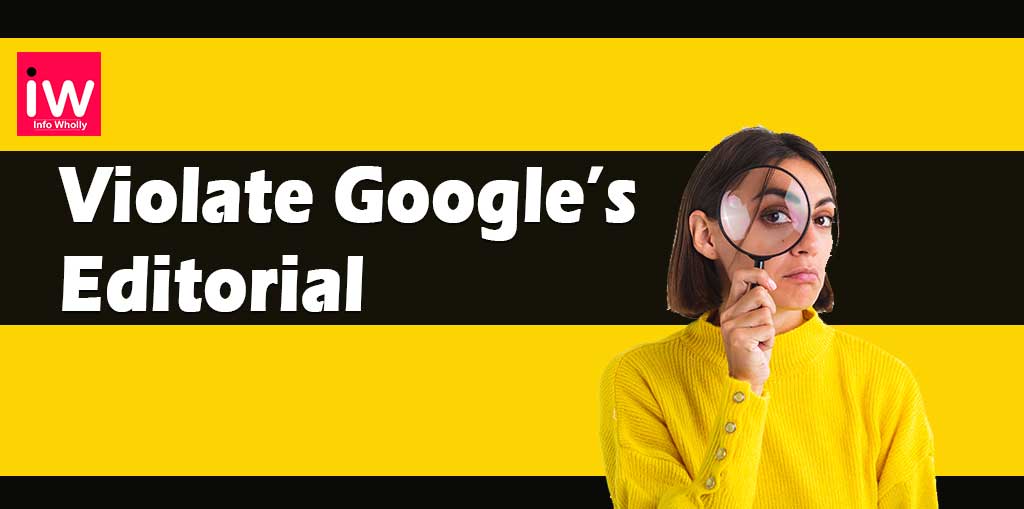For excellent, consistent, and quality user experience, Google has created editorial and professional policies applicable to every ad, extension, and destination.
The search engine only allows clear and professional ads, which leads users to content that is entirely relevant, useful, and easy to understand and interact with.
So, you must be wondering which practice would violate Google’s editorial and professional requirements. Don’t worry. This is precisely what this article will tell you about.
These requirements are primarily essential to individuals that periodically run Google’s ads in an attempt to implement the best local SEO services.
But before we do that, let’s take a quick look at Google’s editorial and professional requirements.
Editorial & Professional Requirements
Usefulness
The content shouldn’t be complicated or frustrating to comprehend or steer.
Examples:
Websites with pop-up or interstitial ads interfere with the customer’s ability to see the requested content.
Websites should not interfere with the browser’s back button, download an additional application, are under construction, underperforming, and don’t load quickly on the most popular browsers and devices.
Websites should be fully functional.
Examples:
Contact Us, social media buttons, blogs, etc., on the main page that doesn’t redirect to the right page or leads to broken or irrelevant pages. Guarantee all links on the website are functioning fine and redirect to appropriate pages.
Websites should have complete business information that isn’t difficult to understand.
Examples:
Contact information, shipping information, or frequently asked questions should contain complete, accurate, and precise information for users to easily understand.
Spelling and Grammar
Promotions should use commonly accepted spelling and grammar.
Examples:
“Flowers here buy” or “Buy flowers here”
Punctuation, symbols, capitalization, spacing, or repetition should be used correctly or for their intended purpose.
Examples:
Unnecessary use of letters, symbols, punctuation, emoticons, emoji, spacing, numbers, and reputation.
Unclear Relevance
You should not include promotions that are irrelevant to the landing page.
Examples:
Product heading or description not relevant to the product advertised, generic landing pages, or distinct product landing pages.
Domain Safety
Landing pages or associated site domains that Google deems unsafe aren’t allowed.
Examples:
Domain pages that are deemed unsafe due to hacking or any other activity can cause the website to become compromised. In addition, if Google detects suspicious activity, it may block customers from visiting your website search engines.
Repetition
Non-standard or unneeded duplication of names, words, or phrases
Examples:
Reiterating the advertiser title and duplicating the product name.
Now, which practice would violate Google’s editorial and professional requirements policies?
Do you know the answer? Well, if you don’t, then don’t worry. The right solution is: Using a Value Track tag.
What Is Value Track Tag?
Adopting marketing processes is a norm in an attempt to let your brand reach its full potential. And if you are already operating your digital campaigns via various platforms, you must already know the significance of following the results of your campaigns.
Value Track is a URL tagging feature in Google AdWords that lets you obtain in-depth insight into your paid campaigns. Value Track parameters are the most effortless methods to follow your Ads performance.
Value Track tag is a URL parameter that is added to the URL of your main page. It will automatically collect all the data about your ads when clicked.
Value Track works alongside various analytics tools to offer information about paid ad searches. These elements are crucial to examine your campaign outcome better and making more suitable digital strategies for execution.
Practical Explanation
Value Track tag is a URL parameter that is placed between brackets {}, for example – {matchtype}. A Value Track tag is added to your ads’ landing page or final URL.
You must add the Value Track tag in the URL and not in the ad text if you wish not to violate Google’s policies.
Suppose you have the tag {matchtype} in your ad URL. It will notify you about the match type of the keyword that activated the ad. However, your data will display its collected data instead of showing {matchtype}.
So that brings us to the end of our article on which practice would violate Google’s editorial and professional requirements.
Please let us know in the comments if you have any questions and which topic you would like us to cover next.


Great information! Appreciated.
Thank you.